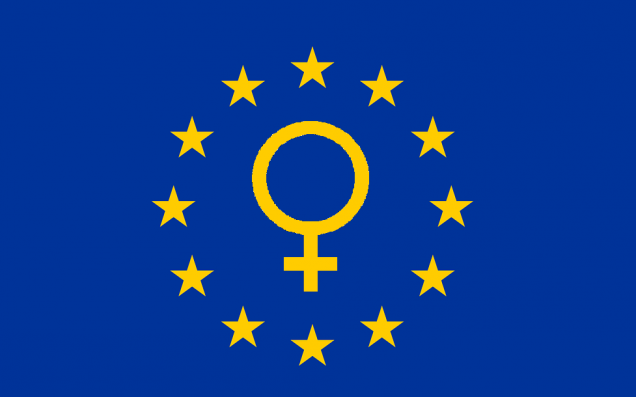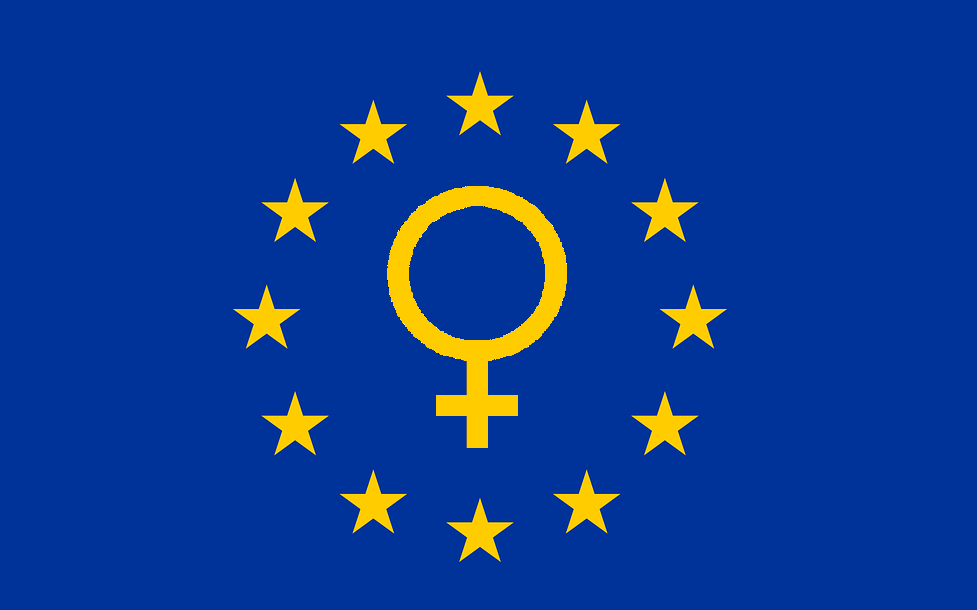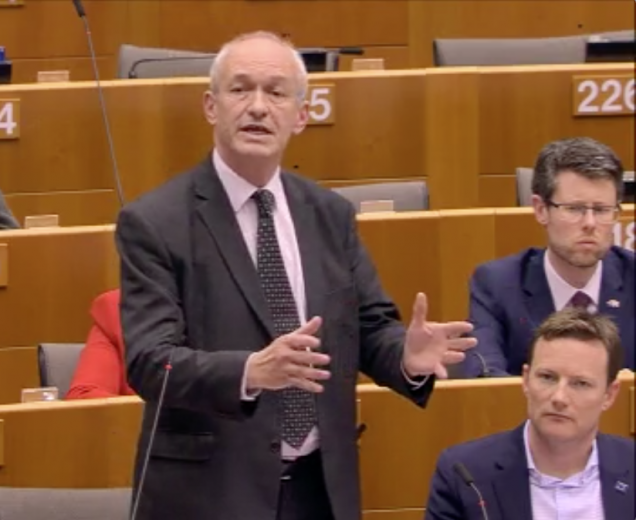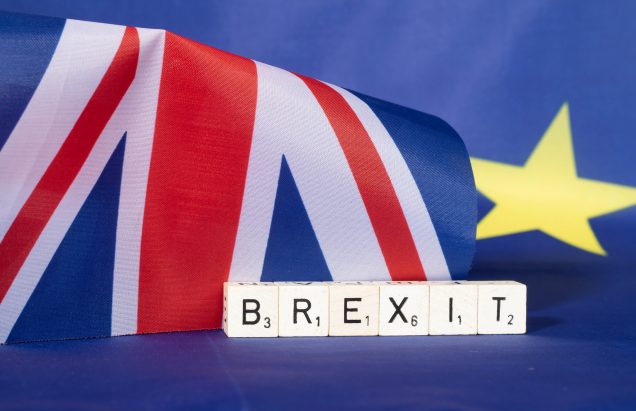As we celebrate women’s history month it is important not just to look at the past achievements, but to look ahead and see how we can ensure we continue the fight for equality.
The EU’s role has been important. Its commitment to ensuring women and men are treated as equal citizens is enshrined in its treaties as a core value of the EU. In fact, the Treaty on the Functioning of the European Union (TFEU) goes beyond a general commitment to gender equality, to make gender mainstreaming – the practice of systematically examining the impact policies will have on both women and men – a principle of all EU policies. The TFEU also enshrines laws covering equal treatment and actions to combat discrimination.[1]
If all goes according to her plan, by the end of this month, Theresa May will have triggered Article 50 and started the process of leaving the EU. Yet, we still know little about the Government’s strategy – the White Paper released last month was very vague on what Britain’s future relationship will look like – and even less about how it plans to protect women’s rights.
In the White Paper, the word ‘equality’ does not appear once. However, the paper does mention a Great Repeal Bill, which will transpose EU legislation into UK law upon our departure. This will allow future governments to decide what to keep, what to amend, and what to abolish, and without a clause specifically protecting equality legislation from regressing once we leave, does little to end concerns about women’s rights.
This Conservative government has introduced cuts and austerity measures which have been proven to impact women unfairly and disproportionately – 86% of benefit cuts and tax changes came at the expense of women.[2] This Conservative government voted for men like Philip Davies MP – known for calling single mothers ‘bonafide idiots’, filibustering a bill to protect women against violence and appearing alongside bloggers who compared Malala Yousafzai to Osama Bin Laden – to sit on the Women and Equalities committee. So we have to be wary of this same government’s commitment to gender equality, and we must ensure EU-wide measures supporting women are not abandoned as we approach Brexit.
Rights at work
When people talk about the achievements of what the EU has done for women, workplace rights are often the primary area of focus, with ‘equal pay for work of equal value’ regarded as the pinnacle of EU-wide equality legislation.
Although the UK introduced the Equal Pay Act in 1970, before it joined the EU, it is legislation at EU level which introduced the idea of ‘equal pay for work of equal value’. Furthermore, the issue of equal pay is far from being solved in the UK- there is still an 18% gap between the earnings of men and women [3], and a larger one still for BAME women[4]. We cannot afford to take for granted that the UK will close the gender pay gap when are no longer part of joint efforts at EU level.
In addition to enshrining equal pay for work of equal value, legislation agreed by EU countries has given women a range of rights at work, valid wherever they are in the EU, as well as specific policy initiatives to help them in the workplace, including:
- Protection from unfair dismissal while pregnant
- Stopping sex discrimination at work
- Extending sex discrimination to cover trans women (and men), after the UK denied their rights
- Providing opportunities for women to reach leadership positions
- Ending upper limit on compensation on sex discrimination cases
- Increasing employment rates for women.
Of course, some of these protections are also including in international agreements, such as the International Labour Organisation. However, in evidence given to the House of Commons’ Women and Equalities Committee, Professor Sandra Fredman raised concerns that, unlike EU rights, it may be difficult for people to refer to these when seeking protection in UK courts.
Upon leaving the European Union, the UK will no longer be part of the common benchmark for settling any differences of interpretation of this equality legislation, arbitrated by the European Court of Justice. It is therefore important that we not only adopt the legislation, but also a way to avoid it being undermined by different interpretations of it.
Supporting survivors and ending violence against women
The Victim Rights Directive applies to all victims of crime in the EU, but is especially relevant to women. It sets minimum standards regarding the ‘rights, support and protection of victims of crime’ and ensures that they are ‘recognised, treated with respect and receive proper protection, support and access to justice’.
Given that women continue to face dismissal when they bring forward claims of sexual assault and violence, it is incredibly important that this directive is maintained in UK law, and that we work with our European partners to ensure British women will be able to rely on this protection when in EU countries after Brexit.
This also holds true for the European Protection Order, which allows those who benefit from protection in one member country to request that the protection is continued as they move or travel across Europe.
It is becoming increasingly evident that Female Genital Mutilation (FGM) is not a problem solely outside the EU. Indeed, each year, around 180,000 women and girls are predicted to be at risk within Europe. Although the UK has banned FGM, recently there has been a rise in reported cases[5], and yet no prosecutions carried out.
Rather than walking away from a group of countries committed to tackling this form of violence, the UK government must continue to work with the EU to end FGM, and look into the possibility of working with EU-funded NGOs who work at a grassroots level to eliminate it, as well as collaborating on projects in non-EU countries.
Migration and Refugees
Some women face a reduction of their rights not only because they are women, but because they are also migrants. While all EU nationals living in the UK will be affected by Brexit, women will often be particularly affected. Until the UK leaves, they are able to rely on EU-wide rules on free movement with access to health care, pensions, social care, rights at work, and victims rights, as addressed above. But after that, all is unclear.
Women who are refugees, fleeing their home countries, have often been subject to gender-based violence, whether this is FGM, rape, or other forms of assault, which need to be acknowledged when they apply for asylum.
In a resolution on the situation on women refugees and asylum seekers in the EU, the European Parliament agreed that safe and legal routes must be made available to asylum seekers, and that women should be registered individually and helped to guarantee their personal safety, freedom of movement and access to services, as required by the UN Convention on Human Rights[6]. It also pressed governments of member states to guarantee specialised trauma counselling and psychological care for women who have experienced gender based harm.
During her time as Home Secretary, Theresa May came under fire for allowing the ‘state-sanctioned abuse of women’ at Yarl’s Wood detention centre. With this shadow over her commitment to women’s rights, it is clear that the Prime Minister must be urged to include protections for non-British women in post-Brexit Britain, and to work with the European Union to establish a framework between member states and the UK for protecting refugees from gender-based violence. Sadly, she must be constantly reminded that there are some issues more important than border control.
Research, funding and collaboration
Money from European Structural and Investment Funds (ESIF) has gone towards many programmes helping women, including advocacy, service delivery, and legal advice schemes. ESIF money has also gone to local authorities and volunteer organisations, who have then been able to support charities helping to develop policy to protect and support women.
The UK’s White Paper for leaving the EU stated that all ESIF funding signed or in place before the autumn statement 2016 will remain ‘fully funded, even when these projects continue beyond the UK’s departure from the EU’. It also includes those signed after the autumn statement, so long as they are good value for money and in line with the UK’s domestic strategy priorities.
However, the UK is at risk of losing its place within campaigns for women’s rights across Europe, which provide essential research for tackling gender-based issues. For example, a survey on violence against women conducted by the European Fundamental Rights Agency was able to interview some 42,000 women across Europe.[7]
It is vital for future policies that the UK does not lose its connections with such organisations, and the government must spell out its intentions regarding EU-wide collaboration – even if the UK has to pay a relevant fee to associate itself with them.
Meanwhile, the Women and Equalities committee of the House of Commons has recommended a cross-governmental strategy for engaging departments with women’s organisations, to replicate initiatives, such as the home office-led violence against women strategy, to ensure that the UK’s commitment to policies improving women’s lives remains active.
Some critics argue that some EU countries still restrict women’s body autonomy, amongst other things. But this does not mean the UK should walk away from trying to influence things for the better. Being part of the EU has allowed the UK to more easily open dialogues with and influence its European partners to improve women’s lives. We must ensure we do not walk away from this vital line of conversation, much needed if we want to protect women not just in the UK but across Europe, and beyond.
Today more than ever, it is important that the UK government recognises that Brexit, if we go ahead with it, has serious potential consequences regarding women’s rights. As a country that values equality and respects the enormous contribution that women make to our society, we must ensure that the government is held to account for maintaining and improving the existing situation at every opportunity, and not allowed to slip backwards.
REFERENCES
[1] http://eur-lex.europa.eu/legal-content/en/TXT/?uri=CELEX:12012E/TXT
[3] https://www.gov.uk/government/news/uk-gender-pay-gap
[5]Partly due to it being mandatory for healthcare professionals to raise it as an issue
[6]http://www.europarl.europa.eu/sides/getDoc.do?pubRef=-//EP//TEXT+TA+P8-TA-2016-0073+0+DOC+XML+V0//EN
[7] https://www.publications.parliament.uk/pa/cm201617/cmselect/cmwomeq/799/799.pdf






